The MasterWorks Museum transports you to four fully explorable environments where you can collect artifacts and learn from archaeologists and scientists as you unravel the mysteries of who built these amazing places and learn about the challenges they face today in a rapidly changing climate.
From the product description
About the Experience
I admit I was a bit confused when I first tried MasterWorks: Journey Through History. You launch it and go straight to Mount Rushmore (South Dakota, USA). You aren’t just at the monument, you’re actually within the sculpture, big noses surrounding you.
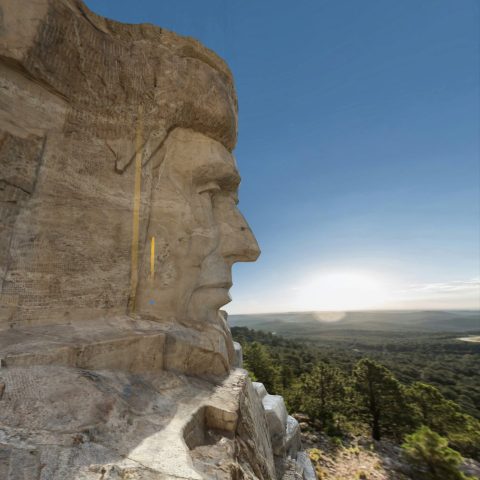
I’ve been to Mount Rushmore in person and didn’t get anywhere near as close as this! You can see the chisel marks clearly and get a sense of its scale in a way that you really can’t from the ground.
As for my confusion, I didn’t realize that this was just the first of four scenes available! In addition to just walking around (like with Blueplanet), you have goals to complete (somewhat along the lines of BRINK) centered on activating all of the informative spots.
Graphics and Sound
The captures are mostly tremendous quality. I say mostly because you do need to stay in the right areas. As with all photogrammetry, you don’t want to peek behind the curtain! If you get to an edge, you’ll see low-quality surfaces and even holes to the void. This is always the case, so apps usually are very careful to keep you within the curated spaces. It seems that with MasterWorks: Journey Through History, they were a little bit more liberal with your viewpoint. I don’t mind it too much since it enables better perspectives, but it could be jarring to some.
Another shortcut you might notice is that walls will often be flat with a texture (think of wallpaper) of bricks shown on it. As long as you aren’t too close to it, you might not even notice it. It definitely shows the amount of optimization that went into making the experience. This title is already four years old, so the tools used to create VR apps have progressed. There’s always a certain amount of work that goes into achieving the balance between a large space and high quality. The larger the space, the more you may need to reduce details in some spots to make everything work well on different systems and headsets.
The areas here are pretty big though. Visiting Ayutthaya in Thailand, the three stupas are captured excellently, as well as the surroundings of the temple. The Balcony House cliff dwellings in present-day Colorado let you walk around the alcove, entering the rooms and descending into the kivas. Visiting ChavÍn de Huántar in Peru means walking around several areas with stone walls and covered areas.
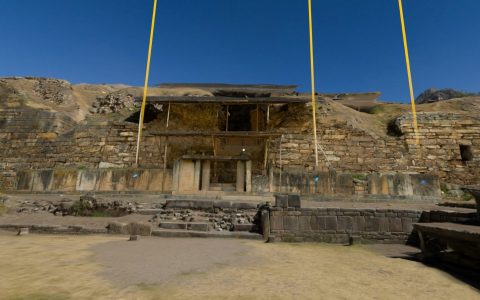
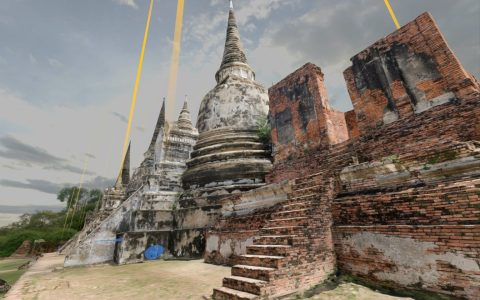
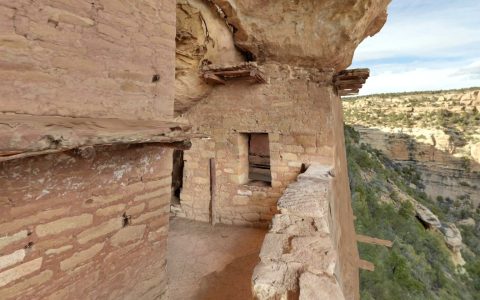
Some of the spots also have an option to visit a 360° 3D photo. These are nice in terms of additional areas to see, but the quality isn’t as good. It’s not as sharp as it could be, but worse still, the left and right images don’t always work together which leads to some distortion, plus the seams can be very noticeable sometimes (360° cameras work by merging together the views from multiple lenses pointing in several directions. where one view merges into another is referred to as a seam). Considering how expensive these cameras can be, it’s a little surprising.
Information Content
In each area, you’ll see rays of light pointing toward the sky. These represent points of interest. Some of these are represented with speakers, and others with floating items. At these spots, you can listen to scientists discussing the significance. One to three recordings may be found at a given spot, and each is somewhere around 30 sec to a minute and a half. All told, listening to all content and exploring at my own speed, it took me around an hour to take in everything.
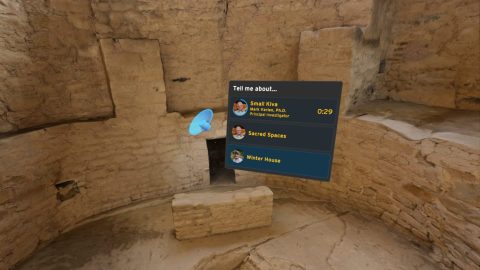
You don’t actually need to listen to the recordings or learn about the relics if you aren’t interested (your loss!). There’s nothing stopping you from just wandering around. I’m not sure if you can disable the floating points of interest and beams of light if you don’t care about them, but I know there’s an option once you complete them.
The data for Masterworks: Journey Through History is courtesy of CyArk. Along with UNESCO, they have a mission to help preserve historic and cultural heritage sites around the world. I’ve talked about these efforts in a previous article. Not only do they make their data freely available, there’s an enormous volume of information, photos, and volumetric scans. You can explore much of this directly in a web browser, but it’s great seeing it transformed into VR experiences as well.
Navigation and Interactivity
Navigation takes place by clicking a button on your controller, pointing to an area of interest, then releasing the button. Not all areas are accessible, so the ground will change color to indicate allowed destinations. In some cases, triangles will point toward an upper or lower spot that you can visit. Overall, this method of movement works well. In very large areas, you may only be able to move a certain distance at a time, but it doesn’t really slow things down.
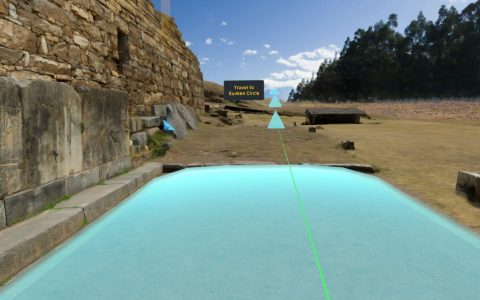
I found that they did a good job of allowing you to move around naturally (depending on your play space) and with teleport. There’s no nauseating smooth movement, and since you can point at items to interact, it should pose no problem to someone with mobility or reach constraints.
Once you finish an area, there is a museum that serves as home base. From here, there is a room for each destination, a model of the entire site, and pedestals where your relics go after learning about them. These rooms look really good.
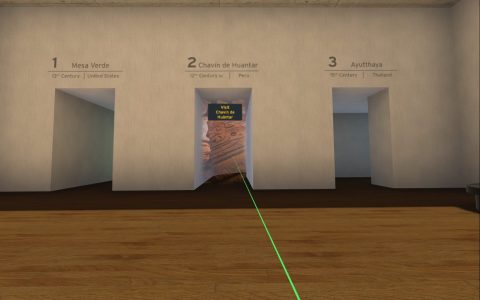
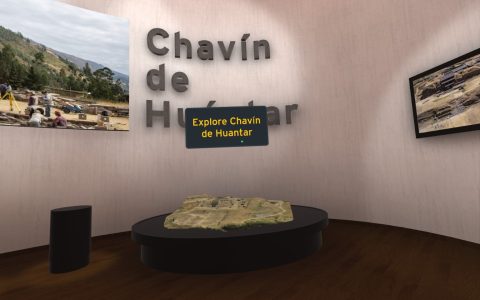
There’s nothing to interact with other than activating the points of interest. I would have liked to be able to hold the floating artifacts in my hand to examine them closer but couldn’t find a way to do it. I also didn’t see the smaller touches of loose rocks or birds flying by that you see in some immersive productions like this.
Updates and Support
It looks like they released their initial version in 2018 and followed up with a release for Vive in 2019. It doesn’t appear that any further updates have been done. It would be amazing to see more world heritage sites added to this as time goes on. There’s so much to choose from!
Summary
Overall, Masterworks: Journey Through History is an excellent title. Four world heritage locations with lots of informative details for the great price of free! It would be great to see an update to take advantage of newer VR techniques and hopefully add more locations, but it’s already an excellent choice for some world exploration. There’s really not much to mark it down for so I’m giving it five stars!
Pros
- Generally high quality captures
- Good accompanying informative content
- Great selection of locations
Cons
- Quality could still be improved in a few spots
- A little more interactivity would be nice



